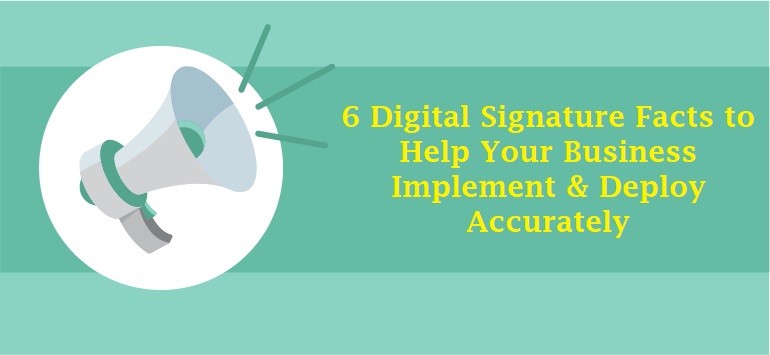How is the contract process in your business coming along?
Studies show more than 37 percent of Small and Medium Businesses still face challenges with their contracts, such as documents signed by a wrong individual or not signed completely.
Perhaps the slow shift to a digital approach is to blame for these problems. An entire 80 percent of document procedures still rely on paper, printing, ink, scanning, and manual faxing.
As a consequence, businesses suffer poor workflows, which cause a ripple effect on their customer experiences.
Electronic solutions, such as the digital signature, is an excellent way to replace paper with digital/smart contracts and ditch ink for a more tech-led approach.

Learning all Digital Signature Facts Upfront Can Ensure Smooth Implementation
But simple as it sounds, switching to digital signatures is easier said than done.
Because the decision to upgrade to a digital approach transforms your entire contract procedure, poor implementation can hamper operations.
Business owners must understand how they work, rules & regulations, and the best practices during implementation and use.
They must also involve their clients in the transformation. Client involvement is essential because contract discussion and validation is a customer-facing business aspect.
So what are some dental digital signature facts every entrepreneur must understand before shifting to tech-led contract validation?
6 Must-Know Facts about Digital Signatures
Businesses must remember the following digital signature facts before adopting a tech-led contract process.
-
Digital Signatures are a form of electric Signatures
The terms “digital,” and “electronic” are often used interchangeably to refer to the latter.
However, digital signatures are different than e-signatures. They are a form of e-signatures that use algorithms to create a digital fingerprint unique to every document. This digital fingerprint can be tied to the identity of the signer.
Digital signatures are traceable, which makes them reliable in confirming the signer and maintaining document integrity.
Business owners looking to adopt must plan adequately and research local and state rules concerning digital signatures.
-
A digital signature is as Perfectly Legal as an ink/wet signature
More than 60 nations worldwide have their laws and regulations that recognize all compliantly appended e-signatures as legal and presentable in court.
In the US, they are federally recognized under the ESIGN Act (Electronic Signatures in Global and National Commerce). Europe has its own eIDAS Regulation (Electronic Identification and Authentication and Trust Services) that protect the validity of compliantly signed documents.
-
To generate digital signatures, you need a digital certificate
To achieve the encryption in these signatures, a business owner needs a digital certificate. You can acquire one from a Certificate Authority service (CA).
A well-established business may develop its own CA, while small & mid-sized enterprises will typically buy certificates from a CA service.
There are several CA services in the market; some even offer custom-built solutions to suit different business needs.
-
How do organizational processes change if you implement digital signatures?
Adopting the digital signature means a total makeover in organizational processes, particularly regarding document management and contract procedures.
The following are bound change;
- Moving from paper to digital contracts.
- Contract discussion and modification now happens online or remotely
- You shift from ink to digital signatures.
- Your Document Management Process changes because you switch to electronic methods and docs.
In essence, digital signatures get rid of manual processes by automating the contract discussion, modification, and approval processes.
-
What is the Implementation Process?
How long it takes to launch a digital signature solution depends on your service provider.
For online or software-based solutions from a single vendor, you can install (or sign up) and launch in 24 hours or so.
In contrast, building an in-house solution or one that leverages a collection of technologies and services from a group of suppliers may take longer to install and launch.
-
What are the Perks of Shifting to digital signatures?
Digital signatures are the best way to automate all contract processes without compromising on document security and integrity.
Getting rid of paper improves process efficiency by;
- Speeding up contracts,
- Increasing document safety and integrity
- Cutting on costs by reducing spending linked to paper
- Better client satisfaction thanks to a streamlined contract process.
A paper-free office also simplifies the document management process because you ditch the piles of paper that complicate the tracing of docs.
Parting Shot
Digital signatures, like any hot piece of tech, must be implemented strategically. Entrepreneurs must draft an excellent blueprint to guide the installation and deployment processes.
Lastly, don’t forget to involve your customers when upgrading to electronic solutions.

